Maryland is a tiny state in size, yet it provides lots of spots for birding. Maryland is home to seven distinct species of woodpeckers, 6 of which are year-round residents. There are several possibilities to witness these unusual birds.
Maryland’s diversified terrain, with its long coastline and Appalachian peaks, attracts both woodpeckers and human observers. However, you will not have to move out of the city to witness these four-toed marvels.
The majority of the woodpeckers all over this listing will frequent densely populated regions ranging from downtown Annapolis to the Baltimore suburbs.
This is particularly true if you provide them with either a suet feeder or perhaps a mealworm feeder. You might see them if you’ve been to the mountains or the shore.
The following are the woodpecker species found around Maryland:
- Red-Headed Woodpecker
- Northern Flicker
- Red-Bellied Sapsucker
- Pileated Woodpecker
- Downy Woodpecker
- Yellow-Bellied Sapsucker
- Hairy Woodpecker
- Red-cockaded Woodpecker
| Image | Name |
|---|---|
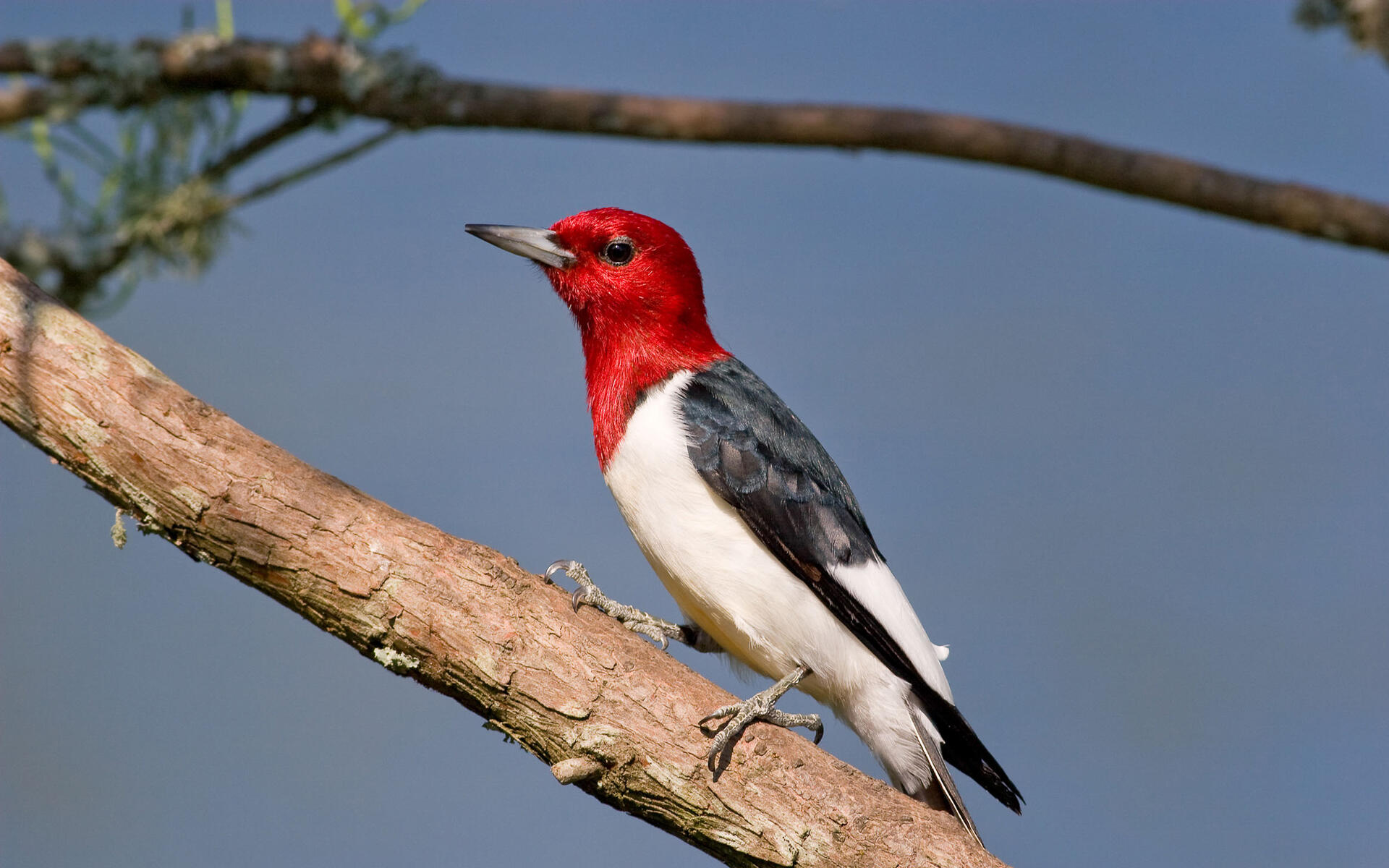 | Red-headed Woodpecker |
 | Northern Flicker |
 | Red-bellied Woodpecker |
 | Pileated Woodpecker |
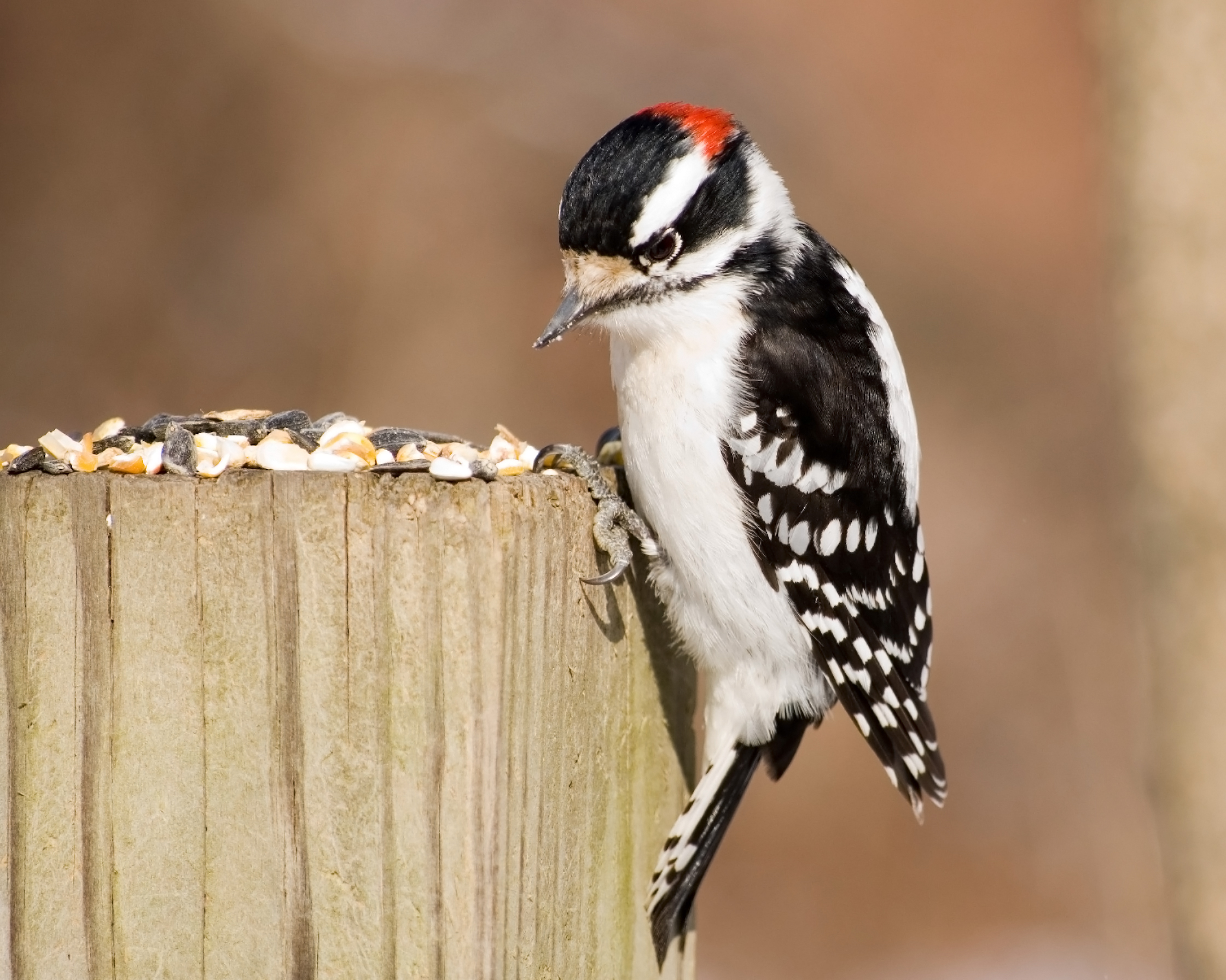 | Downy Woodpecker |
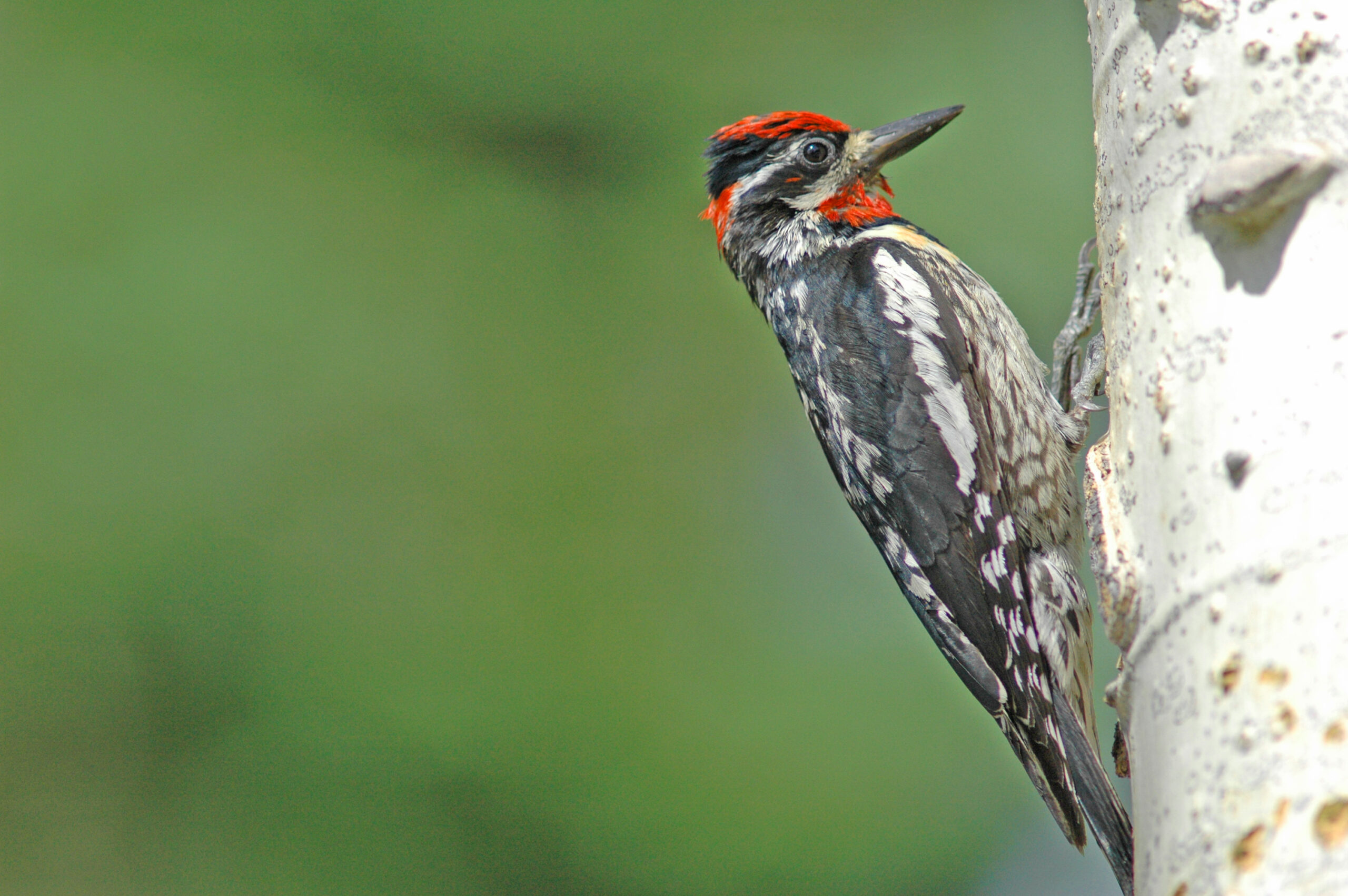 | Yellow-bellied Sapsucker |
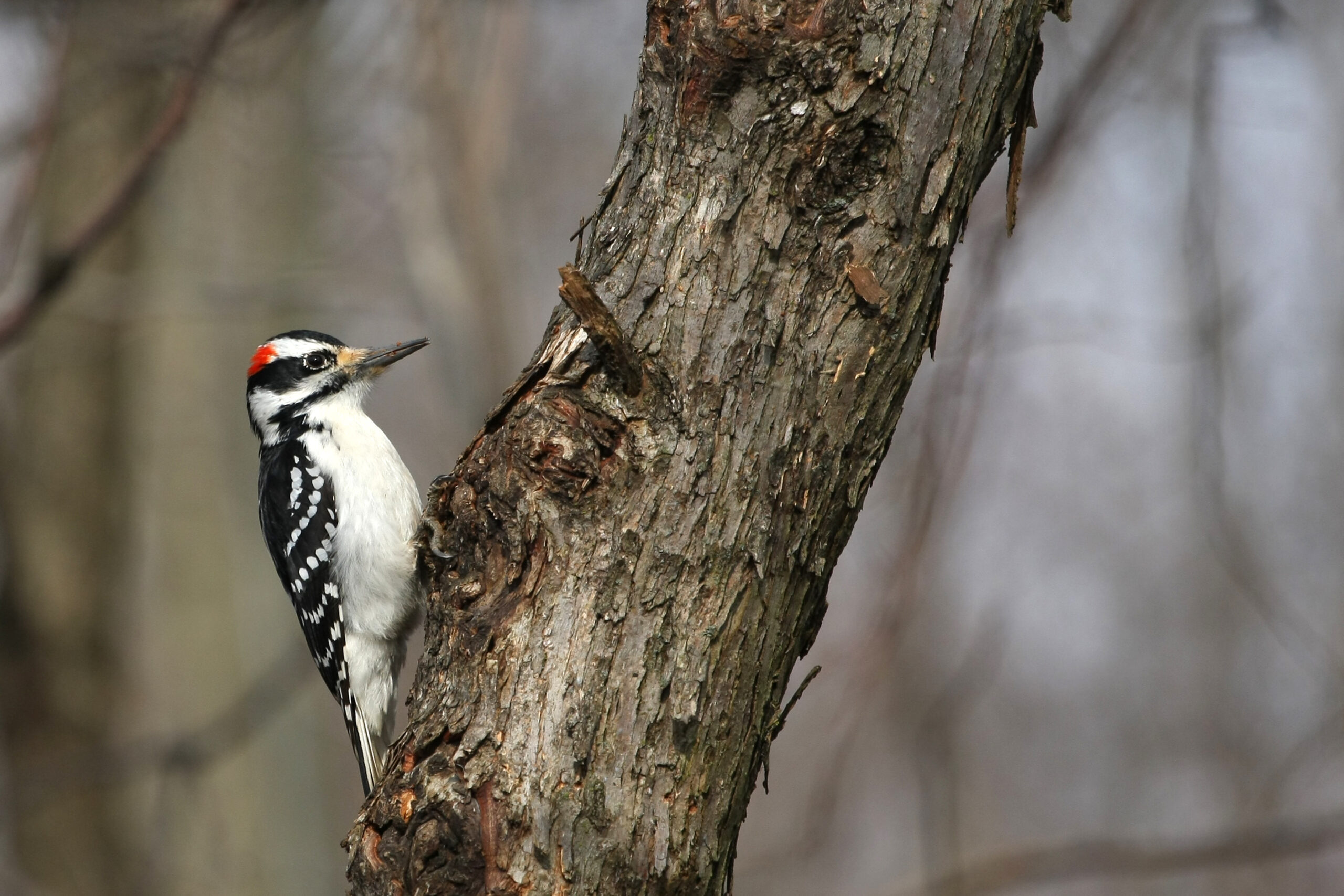 | Hairy Woodpecker |
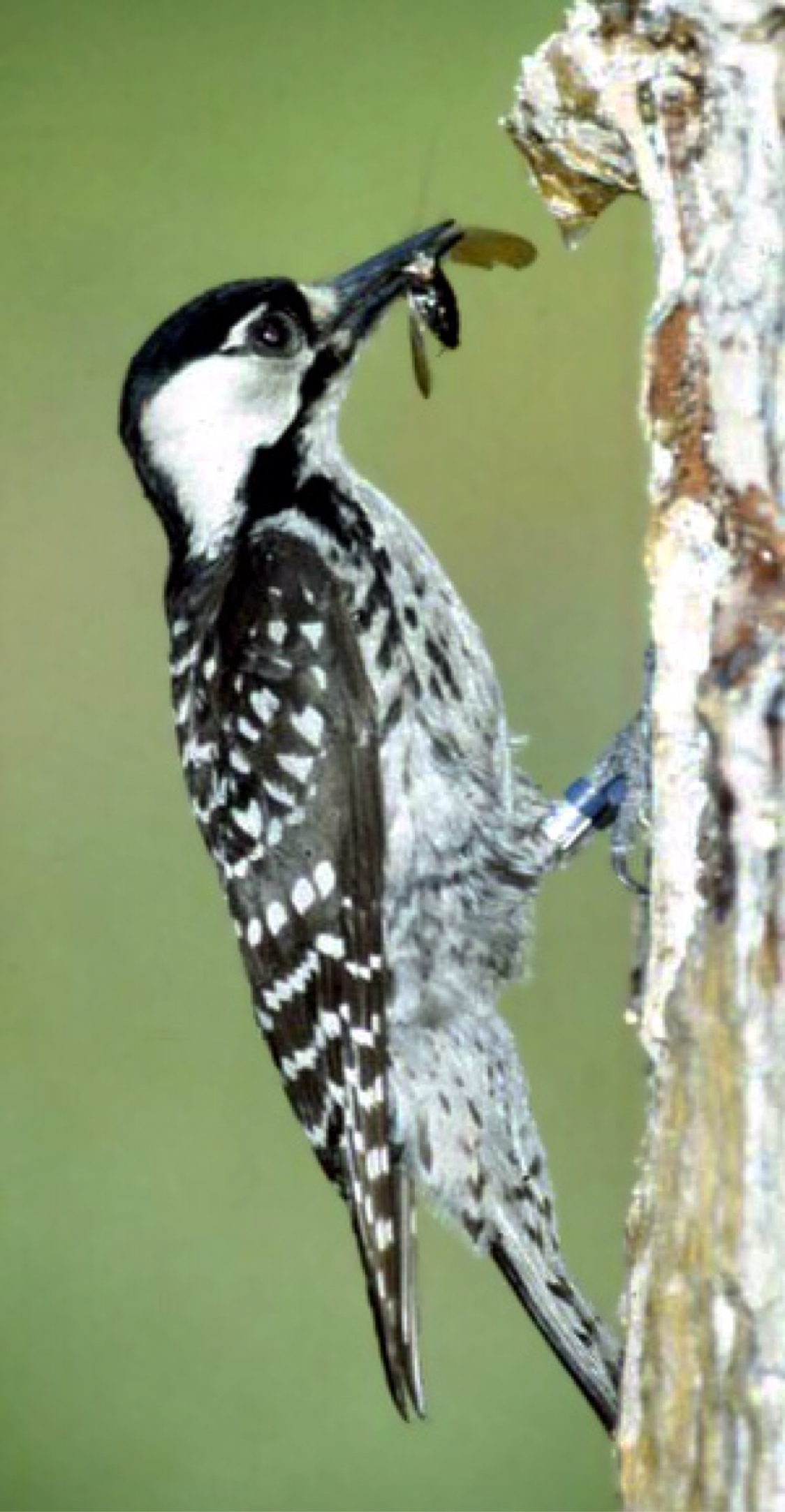 | Red-cockaded Woodpecker |
Different Species of Woodpeckers in Maryland
1. Red-headed Woodpecker
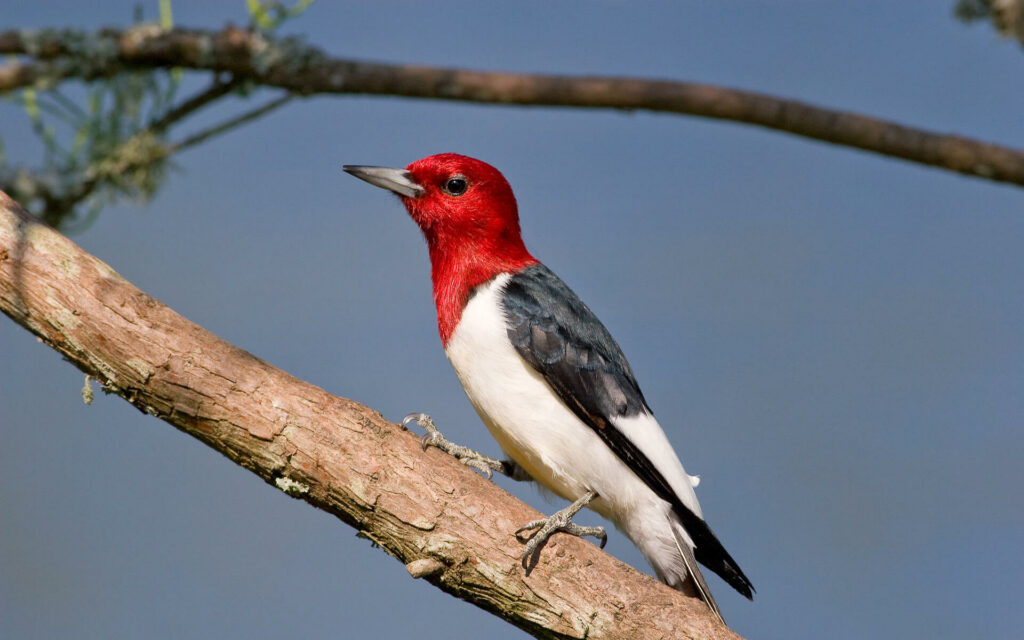
The red-headed woodpecker is a lovely bird. They possess white bodies and complete black wings including a large white spot. They feature dark crimson heads and necks that have been so bright they seem like velvet.
The youngsters appear brownish-black in color, having white markings on their wings and dull red cheeks.
| Scientific name | Melanerpes erythrocephalus |
| Weight | 2.0 to 3.2 oz |
| Size | 7.5 to 9.1 in |
| Wingspan | 16.5 in |
They do not cross the Mountain Ranges towards the west, although they may be located all the way east, across Florida to Canada.
These woodpeckers spend the entire year in Maryland. You may encourage them to your backyard by providing them with suet or oranges.
It is among the few woodpeckers that store food for the wintertime. They tuck seeds and nuts into tree bark or holes.
They’ve also been found to cram food beneath roofs, which is naturally upsetting to homeowners.
They also seek their prey by capturing insects as they fly through the air. That is unusual behavior for woodpeckers, which typically feed on crawling insects.
2. Northern Flicker

Northern flicker woodpeckers thrive in open environments around trees, as well as cemeteries and parkland throughout Maryland. They attend suet feeders throughout suburban and urban yards on a regular basis. Unlike certain woodpeckers, they prefer to scavenge on the land instead of in the trees.
They are the second biggest woodpeckers across Maryland and among the most frequent varieties of woodpeckers in the state. They have a unique appearance and are easy to recognize.
The look of males, females, and youngsters varies according to where they reside. They’re brown, having black markings on the outside. The undersides of the wings, as well as tails, appear yellow throughout the eastern half of the United States (particularly Maryland) while red in the western parts.
Most have a red or black line across their cheekbones, many of which have big, black crescents across their breast. Some people possess red markings on the back of their heads. It may have a grayish head.
| Scientific name | Colaptes auratus |
| Weight | 4 to 6.5 oz |
| Size | 11 to 12 in |
| Wingspan | 16.5 to 20 in |
Northern flicker cries can be heard from a considerable distance away in the spring. They have a rather unique call, and if you recognize what it feels like, you can identify when one is around.
Food
They predominantly consume ants, although they will also consume caterpillars, beetles, and termites. If you have bugs in your garden, this is a bird you should keep around!
They have also been observed grabbing juvenile bats as they exit their nest. You might entice them to come to your house by placing a suet feeder in the backyard.
Flickers from northern latitudes such as Canada and Alaska travel to hotter climates throughout the wintertime, however, these woodpeckers stay in Maryland throughout the year.
3. Red-bellied Woodpecker
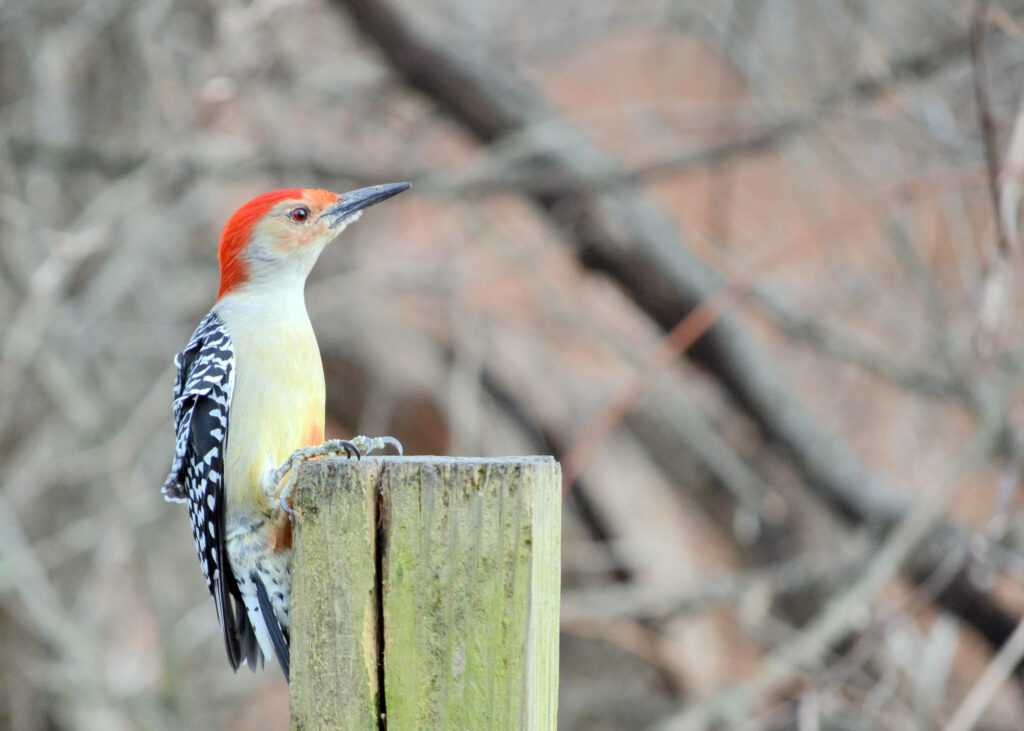
Considering their nickname, you’d think such woodpeckers would’ve had brilliant red bellies, but that isn’t the reality. Their stomachs are usually light, milky white.
Their wing and back plumage is patterned white and black, and females have quite a red nape. Males always have crimson crowns as well as nape.
| Scientific name | Melanerpes carolinus |
| Weight | 2.0 to 3.2 oz |
| Size | 9.5 in |
| Wingspan | 13.0 to 16.5 in |
Therefore, how did the term “red-bellied” originate about? The woodpeckers possess red plumage on their stomachs, and they’re hidden by white feathers, therefore you can’t notice anything.
These energetic woodpeckers may be found in states such as Pennsylvania, Ohio, and Maryland. Their meandering flying style makes them easy to spot in the sky.
Find them on oak and hickory trees, in which they eat and nest. In addition, they will frequently visit suet feeders in yards and gardens.
4. Pileated Woodpecker

The pileated woodpecker dwells across Maryland throughout the year and prefers woods with many tall trees. They frequently build their nests in power lines or even in the deadwood of towering trees.
Carpenter ants are their preferred food, and they will bore square cavities deeply into the wood to locate them.
They will also consume nuts and berries, as well as poison ivy fruit. They might forage for food on the land sometimes, although they prefer to stay in the trees.
| Scientific name | Dryocopus pileatus |
| Weight | 9 to 14 oz |
| Size | 16 to 19 in |
| Wingspan | 30 in |
These unusual birds are generally black and white, however, their brilliant red crown makes them stick out. Males have such a red stripe down the side of their cheeks as well.
These are all the biggest woodpeckers throughout Maryland and thus are nearly the size of a crow.
Pileated woodpeckers need not travel and spend all their time living in the same region. If the eggs drop out from the nest, they might relocate to a neighboring location.
This species was most likely the inspiration for the cartoon bird Woody Woodpecker. When comparing the comical bird to all of these woodpeckers, it’s clear to perceive the similarities.
5. Downy Woodpecker

The downy woodpecker seems to be Maryland’s tiniest woodpecker, although its diminutive size doesn’t really make it very difficult to see.
That’s because it’s fearless and unafraid of humans. It’s among the most frequent woodpeckers, so possibilities are you’ll spot one or more in Maryland.
Another justification for their simple identification is that this adorable tiny bird doesn’t really migrate. Rather, they remain in their habitat all year, so you may see these woodpeckers including during the wintertime in Maryland, while other birds go south.
Downy woodpeckers may be found across Maryland, such as in rural regions, towns, residential yards, and wilderness areas.
| Scientific name | Dryobates pubescens |
| Weight | 0.75 to 0.99 oz |
| Size | 7 in long |
| Wingspan | 10 to 12 in |
During the wintertime, birds congregate with some other birds like chickadees and nuthatches for protection and food.
They nurture their babies in the cavities of trees wherever they make their nests. Although their ecological area may fluctuate with the seasons, they do not wander significantly.
Downy woodpeckers have black and white striped wings and a white breast. Adult males have quite a brilliant red crown on the rear of their heads that distinguishes males from females.
To welcome downies, install a suet feeder in your backyard. Of all the woodpeckers throughout Maryland, they are by far the most regular visitors to suet feeders.
Due to various of their tiny size, they may seek food by landing on little plant stalks. They’re also tiny and sufficiently build nests in the wooden siding of houses, often to the chagrin of residents.
6. Yellow-bellied Sapsucker

The yellow-bellied sapsucker mainly enters Maryland even during the non-breeding season, though only in the state’s eastern portion.
These birds seem to be mostly black and white, having white stomachs and striped black and white wings and backs. Males and females may be distinguished by the brilliant red neck of the male.
In contrast, females have such a white neck. Males and females have both crimson foreheads.
Females get a slight golden color on their abdomen, but it can be so vague that you may not get it until you approach up close.
| Scientific name | Sphyrapicus varius |
| Weight | 1.5 to 1.9 oz |
| Size | 7.1 to 8.7 in |
| Wingspan | 13.4 to 15.8 in |
These sapsuckers use their beaks to dig small holes into trees as well as other materials, then wait for the delicious juice to drip from the tree. They lick it up, as do many invertebrates that creep along and become entangled in the sap.
They may be seen at your garden suet feeder, however, they prefer to stay in the woods. They are not quite as daring as any of their woodpecker relatives.
7. Hairy Woodpecker
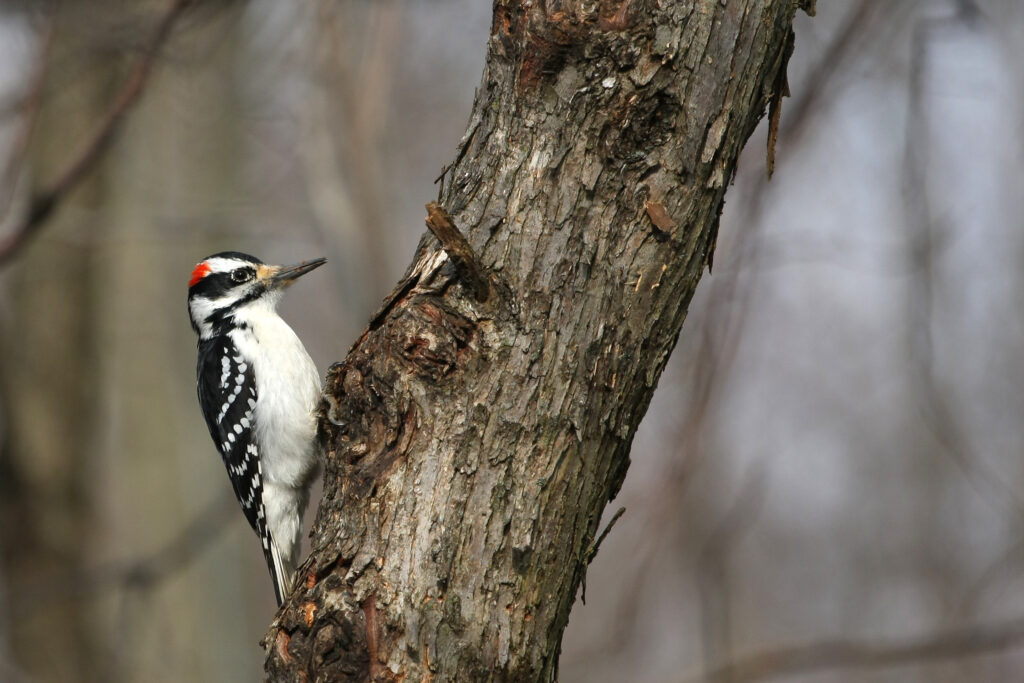
Hairy woodpeckers resemble downy woodpeckers, however, they may be distinguished since Hairy woodpeckers appear bigger. They have also larger bills that are almost as big as their heads.
They, like so many woodpeckers, appear black and white. Adult males have a small red mark upon the back of their forehead, which distinguishes them from each other.
These lovely birds are not as numerous throughout Maryland as their relative, the downy woodpecker. They could still be found in playgrounds, suburban neighborhoods, cemeteries, and other peaceful forested or grassy settings. They also frequent visitor’s suet feeders.
| Scientific name | Picoides villosus |
| Size | 7.5 in |
| Weight | 1.4 to 3.4 oz |
| Wingspan | 13 to 16 in |
Hairy woodpeckers don’t really travel during the winter and remain in the same location throughout the year. They live in the holes of fallen trees.
According to a study in the Journal of Wildlife Management, they preferred freshly burnt woods since there is enough food for them there.
Population numbers have been dropping in recent decades as a result of habitat loss. They are also threatened by invading birds such as European starlings, which usurp their breeding sites.
8. Red-cockaded Woodpecker

The red-cockaded woodpecker has been one of 8 varieties of Maryland woodpeckers, so it is among the most common.
They are easily recognized by their beautiful black hat and, obviously, their trademark black and white patterning.
Red-cockaded woodpeckers eat wood-boring insects, spiders, beetles, caterpillars, ants, and cockroaches to live. They also eat berries, fruits, and corn earworms.
| Size | 7.1 to 9.1 in |
| Weight | 1.4 to 2.0 oz |
| Wingspan | 13 to 16 in |
Red-cockaded woodpeckers use fungi to make nesting cavities in living trees. They chose to dig their holes 100 cm below ground, with 2 to 3 inches of openings facing west and south.
This bird breed utilizes wood pieces as a nest within the hole to nurture its young.
Check out this article on Types of Woodpeckers in Pennsylvania.
Conclusion
Your birding efforts will be a lot more enjoyable that now you recognize the eight varieties of woodpeckers throughout Maryland. You now understand how to identify each species and what attracts woodpeckers in respect of feeding and nesting sites.
Please share this information with your pals, families, and social networks. Please do let us know if you have any further ideas or details.
We value the opinions of our loyal readers.
FAQ
Are woodpeckers uncommon in Maryland?
Pileated Woodpeckers are environment adaptive, and while not plentiful, they may frequently be located all throughout Maryland. There are several reports of them being drawn to garden bird feeders.
What entices a woodpecker to visit your home?
Woodpeckers typically pound on buildings for one of four main reasons: Because it generates a pleasingly loud noise, announcing the bird’s area and attracting a partner.
If the birds are pounding for all these purposes, they would most probably stop when mating season begins in the springtime (they do not drum for feeding).
Where else do woodpeckers build their nests?
They nest inhabit fields or open woodlands with minimal greenery on the land, in tree stumps or dead sections of tree trunks such as pines, maples, birches, cottonwoods, and oaks.
They frequently exploit snags that have lost almost all of their bark, resulting in a smooth surface that snakes might avoid.
How long does a woodpecker live?
A wild woodpecker’s average lifespan might range from 4 to 11 years, depending on the species.
Last Updated on March 22, 2023 by Lily Aldrin
